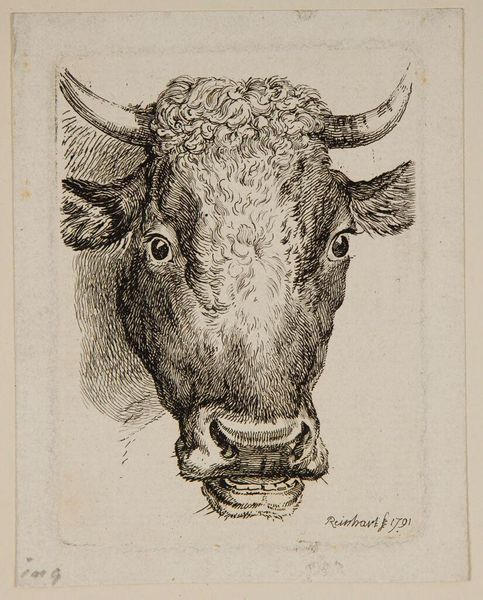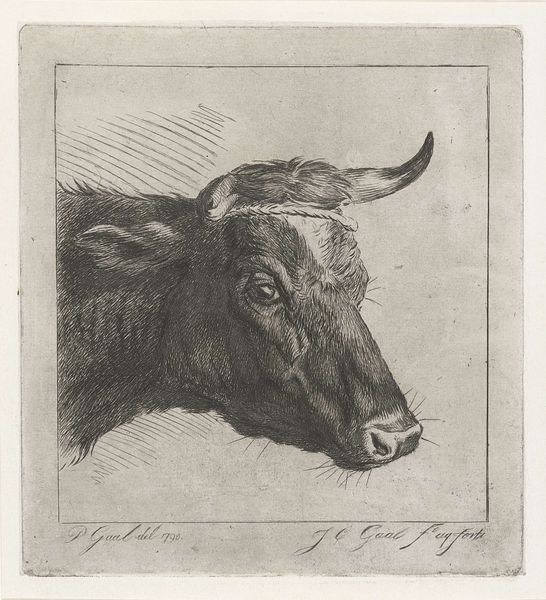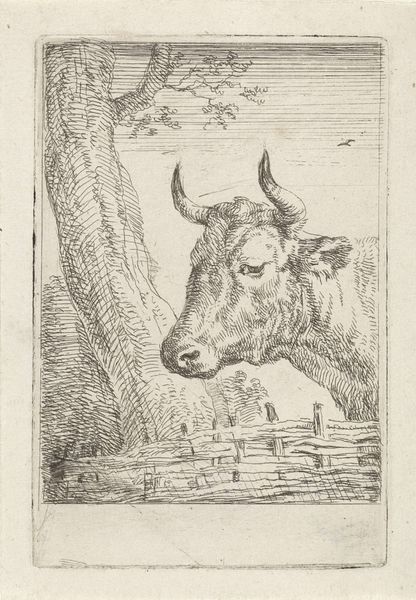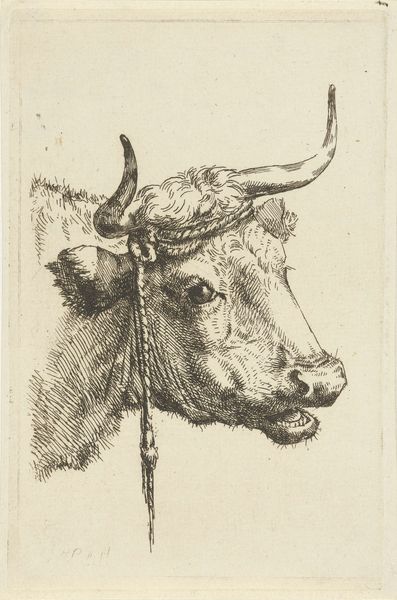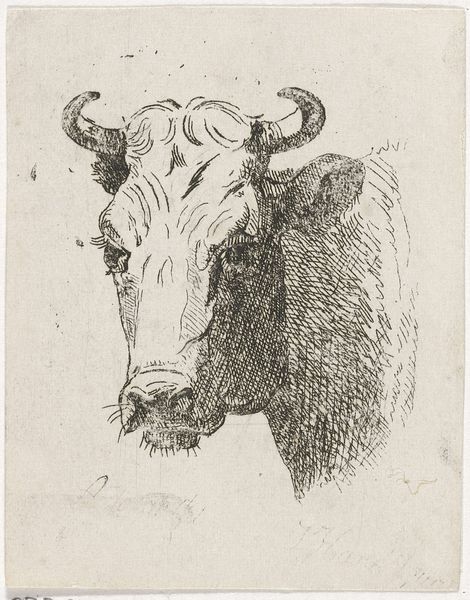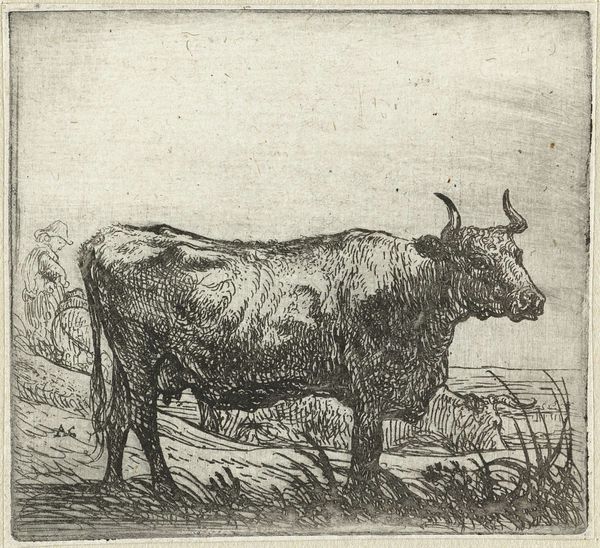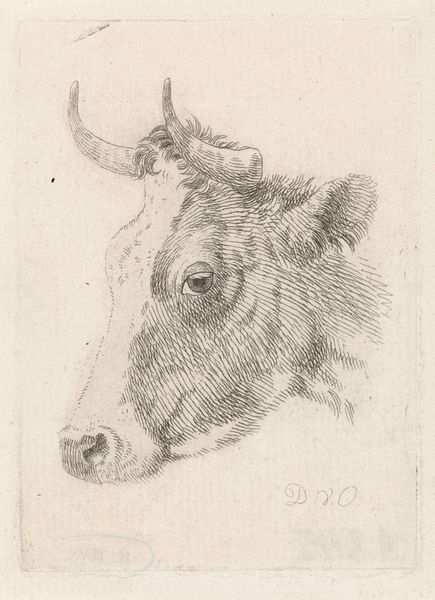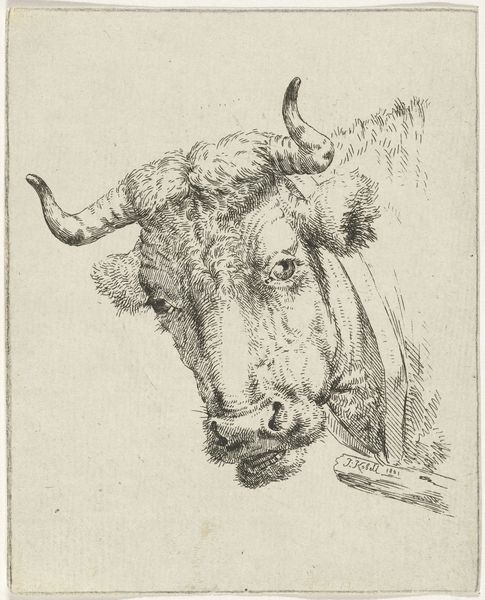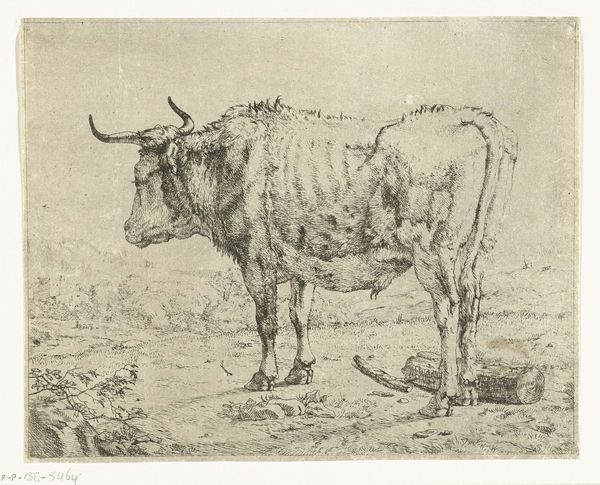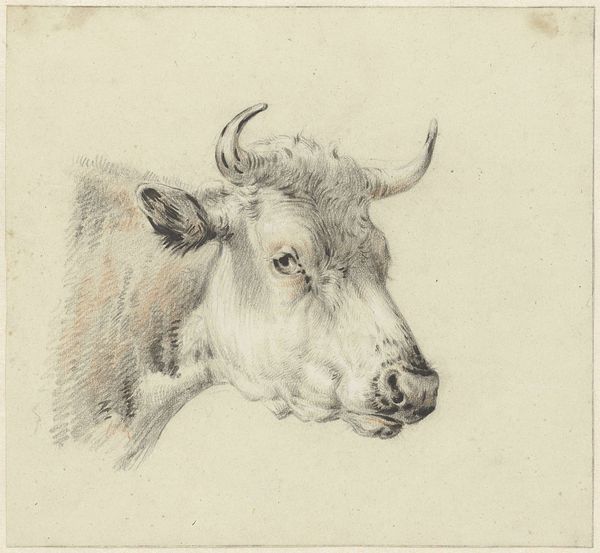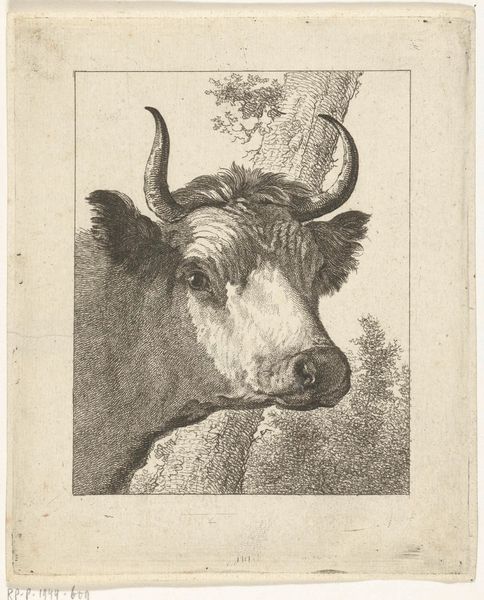
drawing, etching
#
portrait
#
drawing
#
etching
#
realism
Dimensions: height 84 mm, width 66 mm
Copyright: Rijks Museum: Open Domain
Curator: Look at this striking etching, "Koeienkop naar rechts," or "Cow's Head, Facing Right," by Johannes (II) Hari, likely created between 1822 and 1887. Editor: It’s rather poignant. There's such a melancholy expression in those eyes, considering it’s just… a cow's head. It feels unusually intimate. Curator: Hari’s meticulous use of etching brings a real sense of texture to the fur. I’m particularly interested in how the printmaking process itself elevated the cow from simple farm animal to subject worthy of artistic representation. Did the rise of agriculture and its impact on 19th century society shape this focus on an animal previously considered utilitarian? Editor: That’s an interesting point. Looking at this image, I'm drawn to consider how such a subject fits within the broader context of Realism during this period. Did exhibiting commonplace subjects like cows challenge established artistic norms, making statements about what art could, or should, represent to the Dutch public? Curator: Absolutely. Etchings, as reproducible artworks, were more accessible than paintings. By creating prints like this, Hari could potentially reach a broader audience, spreading an interest and acceptance of depicting farm life or even just this sort of bucolic imagery. Editor: There's something also quietly rebellious about singling out this humble creature and presenting it so directly to the viewer. Museums and galleries are such gatekeepers, and this print invites a more democratic relationship to fine art. Curator: Consider, too, the labor involved in both farming and art production during this period. Were prints like this sold directly by the artist, engaging with nascent market economies? Was the consumption of agricultural goods and the production of art linked, materially and conceptually? Editor: In a way, the success of this etching relies on that link. It provides a glimpse into 19th-century Dutch society, subtly questioning prevailing artistic standards through something as commonplace as a cow. It's amazing that this piece still resonates so much today. Curator: It really is. Studying this work through the lens of its materiality and production gives a newfound appreciation for Hari's quiet yet radical approach.
Comments
No comments
Be the first to comment and join the conversation on the ultimate creative platform.
